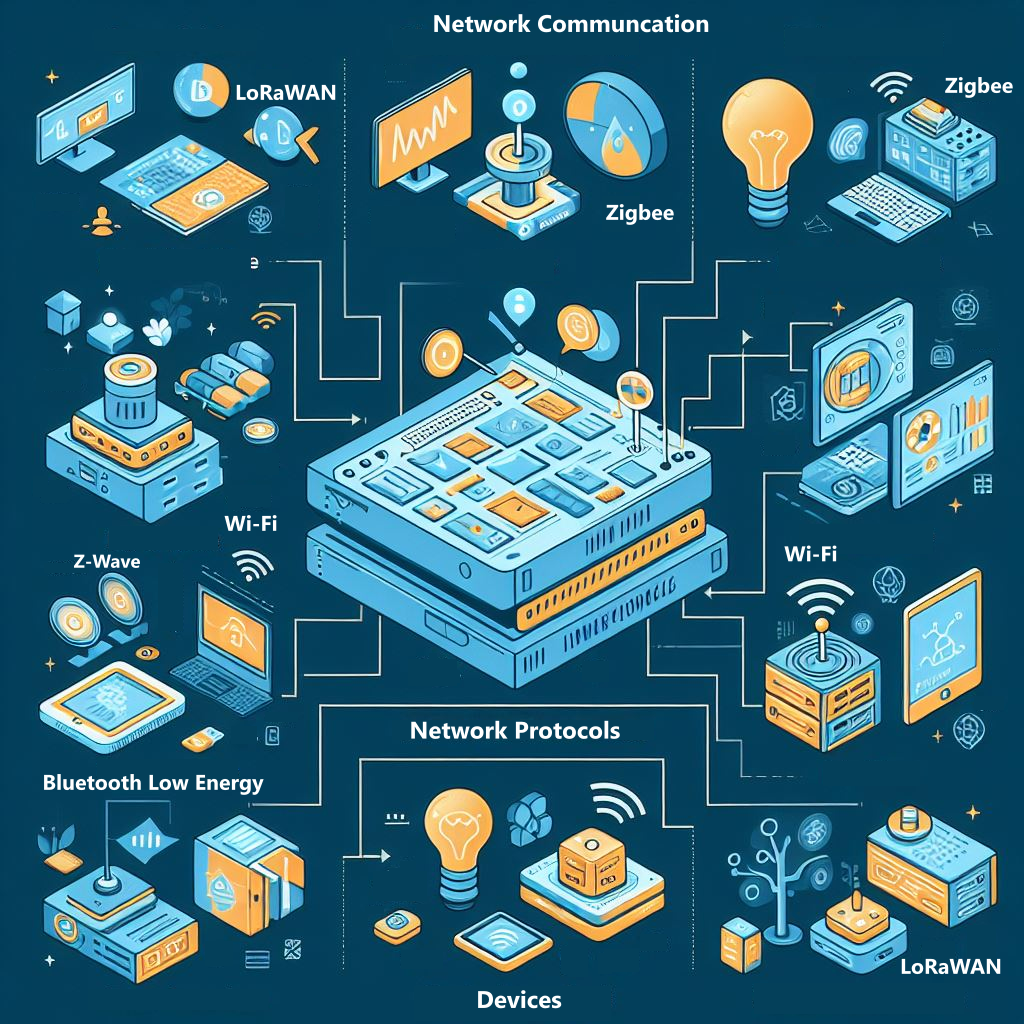Choosing the Right IoT Protocol - A Step-by-Step Guide for Developers and Engineers
Introduction
The Internet of Things (IoT) has revolutionized the way we interact with the world, with an ever-growing number of connected devices and applications. As the IoT ecosystem expands, the need for efficient and reliable communication becomes increasingly critical. IoT protocols play a significant role in enabling seamless communication between devices, applications, and services. In this article, we will explore the most widely used IoT protocols, their features, and the factors to consider when selecting the right protocol for your IoT project.
The Internet of Things (IoT) is a system of interrelated computing devices, mechanical and digital machines, objects, animals, or people, that are provided with unique identifiers and the ability to transfer data over a network without requiring human-to-human or human-to-computer interaction. IoT protocols are the rules that govern how data is exchanged between IoT devices. They are essential for ensuring that IoT devices can communicate with other devices in the network.
Understanding IoT Protocols
IoT protocols are the communication standards that govern the exchange of data between IoT devices, platforms, and applications. They define the rules for data transmission, ensuring that devices can communicate and understand each other. IoT protocols can be broadly categorized into two types:
- Network Protocols: These protocols facilitate communication between devices and networks. They operate at the lower layers of the IoT architecture, managing data transmission and connectivity. Some examples of network protocols include:
- Bluetooth
- ZigBee
- Wi-Fi
- LTE-M
- Narrowband IoT
- Application Protocols: These protocols operate at the higher layers of the IoT architecture, managing the exchange of data between devices, platforms, and applications. Some examples of application protocols include:
- MQTT
- CoAP
- HTTP
- AMQP
Popular IoT Network Protocols

Here are some of the most popular IoT network protocols:
- Bluetooth Low Energy (BLE): BLE is a low-power wireless protocol designed for short-range communication. It is ideal for battery-powered IoT devices, offering low latency and power consumption.
- Zigbee: Zigbee is a mesh networking protocol that allows devices to communicate over short distances. It is known for its low power consumption, high reliability, and ability to support many devices.
- Z-Wave: Z-Wave is another mesh networking protocol designed for smart home automation. It offers low power consumption, long-range communication, and robust security features.
- Wi-Fi: Wi-Fi is a widely used wireless communication protocol that enables high-speed data transfer over longer distances. It is suitable for IoT devices, requiring high bandwidth and fast data transmission.
- LoRaWAN: LoRaWAN is a low-power, wide-area network protocol designed for long-range communication with low data rates. It is ideal for IoT applications that require low power consumption and long-range connectivity.
Popular IoT Application Protocols

Here are some of the most popular IoT application protocols:
- MQTT (Message Queuing Telemetry Transport): MQTT is a lightweight, publish-subscribe protocol designed for resource-constrained devices and low-bandwidth networks. It is ideal for IoT applications that require efficient and reliable data transmission.
- CoAP (Constrained Application Protocol): CoAP is a web transfer protocol designed for constrained devices and networks. It operates over User Datagram Protocol (UDP) and offers low overhead and latency, making it suitable for IoT applications with limited resources.
- HTTP/HTTPS (Hypertext Transfer Protocol/Secure): HTTP and HTTPS are widely used application-layer protocols for exchanging information on the web. While they offer high compatibility and ease of use, their higher overhead and power consumption make them less suitable for resource-constrained IoT devices.
Choosing an IoT Protocol
The best IoT protocol for a particular application will depend on many factors, including the power requirements of the devices, the bandwidth requirements, and the security requirements.
For example, if you are developing a smart home automation system, you will need to choose an IoT protocol that is lightweight and low-power. MQTT or CoAP would be good choices for this application. If you are developing a system for tracking assets in a remote area, you will need to choose an IoT protocol with a long range. LoRaWAN would be a good choice for this application.
Factors to Consider When Choosing IoT Protocols
Selecting the right IoT protocol depends on various factors, including:
- Power Consumption: IoT devices often have limited power sources, making low-power protocols like BLE, Zigbee, and LoRaWAN more suitable.
- Range: The required communication range will influence the choice of protocol. Wi-Fi and LoRaWAN are suitable for longer-range communication, while BLE, Zigbee, and Z-Wave are better for short-range applications.
- Data Rate: High-bandwidth applications may require protocols like Wi-Fi, while low-data-rate applications can benefit from protocols like MQTT or CoAP.
- Network Topology: The network topology influences the choice of protocol. Mesh networking protocols like Zigbee and Z-Wave are suitable for applications with multiple interconnected devices, while star topology networks may benefit from protocols like LoRaWAN.
- Security: The level of security required for the IoT application will also impact the choice of protocol. Protocols like Z-Wave and HTTPS offer robust security features, while others may require additional security measures.
- Scalability: As IoT ecosystems grow, the ability to support many devices becomes crucial. Protocols like Zigbee and LoRaWAN can support many connected devices, making them ideal for scalable applications.
- Interoperability: In complex IoT ecosystems, devices may need to communicate with various platforms and services. Choosing protocols that offer interoperability and compatibility with other systems is essential for seamless communication.
- Industry-Specific Requirements: Some industries may have specific requirements or standards that dictate the choice of protocol. For instance, in healthcare, protocols with robust security and compliance features may be more desirable.
It is important to consider all of these factors when choosing an IoT protocol for your application. By doing so, you can ensure that you choose the right protocol for your needs and that your IoT application is successful.
Conclusion
IoT protocols are an essential part of the IoT ecosystem. They allow IoT devices to communicate with each other and with the internet. IoT protocols play a vital role in ensuring seamless communication between connected devices, platforms, and applications. By understanding the different types of IoT protocols and considering factors like power consumption, range, data rate, network topology, security, scalability, interoperability, and industry-specific requirements, organizations can make informed decisions when selecting the right protocol for their IoT projects. Ultimately, choosing the appropriate protocol will contribute to the efficiency, reliability, and success of the IoT ecosystem.